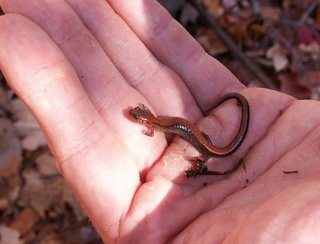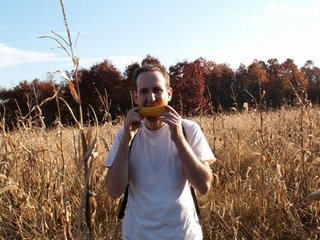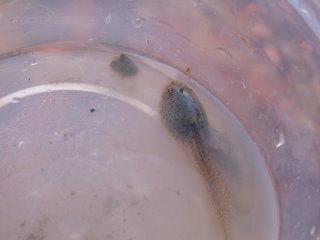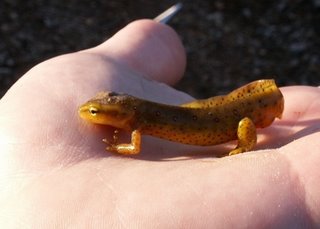I’ve looked on chilly days, and I’ve looked on a few of the beautifully warm days we’ve had lately, but I haven’t found any snakes.
The redback salamanders (Plethodon cinereus), however, seem to have been enjoying the weather. I just checked my records, and I’ve found redbacks in every month of the year except for July, and almost always in temperatures below 80 degrees. These little critters stay underground in hot, dry weather, but give them a cool, moist hiding spot near the surface and they’ll use it.
A week ago, on the 5th, Jen and I went to the Mount Moriah Cemetery in SW Philly to check for brown snakes. It was sunny but chilly (low 40s) in the late afternoon, and I’d been thinking that the right piece of cover might possibly reveal some basking snakes, but what we found was salamanders:
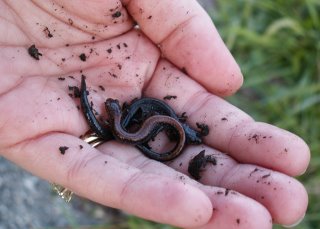
I went back midday yesterday (the 10th), another sunny day, but again found only salamanders. I need to stop saying “only salamanders,” since these are some beautiful salamanders. They were also pretty meaty looking for redback salamanders. Maybe they’ve been laying down fat for the winter, but they’ve lost a little of the slender grace I like so much in redbacks.
Of course maybe I've developed a really strangely critical eye for redback salamanders after finding so many this fall, and these look pretty normal. I'll let you be the judge.


Here’s one other salamander, a two-lined (Eurycea bislineata). We were hiking with some friends in Somerset County, NJ, on a sunny day (the 4th) in the high 40s. Jen checked a rock in a stream, and she found this very muddy looking guy:

Two-lined salamanders live in streams. You’ll find Redbacks anywhere in the woods except for streams, but two-lined salamanders stick under rocks in very shallow water or just at the edge of the water. I usually find them under rocks that are resting partly on the land and partly in the water. I think they like to be out of the water but want to be able to jump in if they need to make a speedy getaway.
Totals:
November 4th:
- 1 two-lined salamander
November 5th:
- 4 redback salamanders
November 10th:
- 6 redback salamanders

